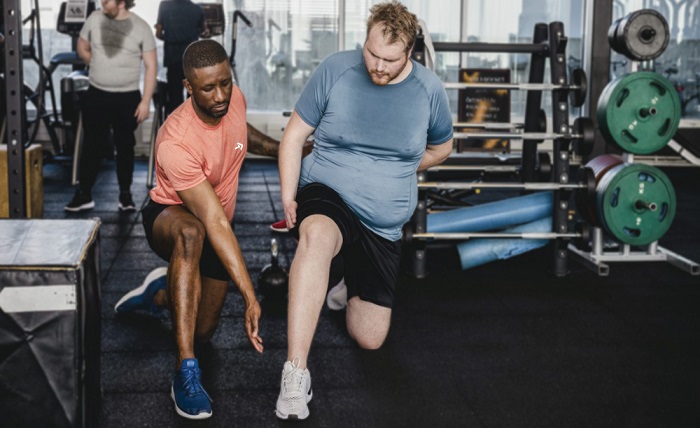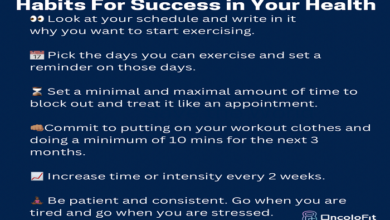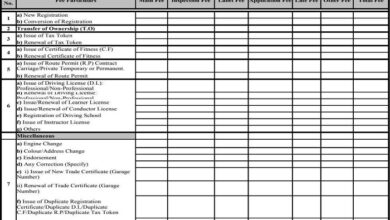The Ultimate Guide to Fitness: Achieve Your Health and Wellness Goals

Fitness plays an essential role in our overall health and well-being. Whether you’re aiming to improve your physical health, boost mental clarity, or increase energy levels, incorporating fitness into your daily routine is a surefire way to achieve these goals. In today’s fast-paced world, many people neglect their fitness due to busy schedules, but dedicating time to fitness can lead to long-term benefits. This guide will explore what fitness truly means, its numerous advantages, and how to build a comprehensive fitness routine that works for you.
What Is Fitness and Why Is It Important?
Fitness refers to your body’s ability to function efficiently in work and leisure activities, stay healthy, resist diseases, and handle emergency situations. It’s a state of well-being where you can perform daily tasks with ease and still have enough energy for other activities. Fitness includes various components such as cardiovascular endurance, muscular strength, flexibility, and body composition.
The importance of fitness cannot be overstated. Regular physical activity helps prevent chronic diseases like heart disease, diabetes, and obesity. Beyond physical health, fitness also enhances mental health, reducing stress, anxiety, and depression. Maintaining fitness improves your mood, boosts confidence, and promotes better sleep, contributing to an overall enhanced quality of life.
The Different Types of Fitness
Fitness is not a one-size-fits-all concept, as there are various types of fitness that address different aspects of physical health. Understanding the different types of fitness can help you create a balanced fitness plan that targets all areas of your well-being.
1. Cardiovascular Fitness
Cardiovascular fitness, also known as aerobic fitness, refers to the body’s ability to deliver oxygen and nutrients to tissues and to remove wastes over sustained periods. Activities such as running, swimming, cycling, and walking are great ways to improve cardiovascular fitness.
2. Muscular Fitness
Muscular fitness is comprised of muscular strength and endurance. Strength training exercises like lifting weights, resistance band exercises, and bodyweight movements enhance muscular fitness. Building muscle helps improve metabolism, body composition, and functional strength for daily tasks.
3. Flexibility Fitness
Flexibility fitness refers to the range of motion in your joints and muscles. Yoga, Pilates, and stretching routines improve flexibility and are important for injury prevention and functional movement. Flexibility fitness allows your body to move freely and efficiently.
4. Balance and Stability Fitness
Balance and stability fitness focus on your body’s ability to maintain control of its movements. Exercises like yoga, Pilates, and balance-specific workouts such as standing on one leg or using stability balls enhance this fitness component. Improving balance is crucial as we age to prevent falls and injuries.
5. Body Composition
Body composition is a fitness type that refers to the percentage of fat, muscle, bone, and water in the human body. Maintaining a healthy body composition through balanced fitness activities and a nutritious diet is key to overall health.
How to Create a Balanced Fitness Plan
A well-rounded fitness plan is essential for achieving your health and wellness goals. Incorporating different types of fitness exercises into your routine ensures that you target all aspects of physical health. Below is a step-by-step guide to help you build a balanced fitness plan:
1. Set Clear Fitness Goals
Start by identifying what you want to achieve through fitness. Do you want to lose weight, build muscle, improve cardiovascular endurance, or increase flexibility? Setting specific, measurable, achievable, relevant, and time-bound (SMART) goals will keep you motivated and focused.
2. Incorporate Cardiovascular Exercises
Aim to include cardiovascular exercises such as jogging, cycling, or swimming into your routine at least 3-4 times a week. These activities improve cardiovascular fitness, burn calories, and boost endurance.
3. Add Strength Training
Strength training is vital for building muscular fitness. Include weightlifting, resistance band exercises, or bodyweight movements like push-ups and squats into your routine at least 2-3 times a week. This will help you build muscle, improve metabolism, and enhance body composition.
4. Don’t Forget Flexibility and Balance
Flexibility and balance exercises are often overlooked, but they are essential for maintaining mobility and preventing injury. Incorporate activities like yoga, Pilates, or simple stretching into your fitness plan 2-3 times a week.
5. Rest and Recovery
Rest is an important part of any fitness plan. Ensure you get enough sleep and allow your muscles time to recover between workout sessions. Overtraining can lead to injuries and burnout.
By balancing these components, you can create a fitness plan that targets all areas of your physical well-being, ensuring long-term success.
The Benefits of Regular Fitness
Incorporating regular fitness into your daily routine offers numerous benefits that affect both your physical and mental health. Here are some key benefits of fitness:
1. Improves Cardiovascular Health
Fitness activities like running, swimming, and cycling improve the efficiency of your heart and lungs, reducing the risk of cardiovascular diseases such as heart attacks, strokes, and high blood pressure.
2. Promotes Weight Loss and Management
Engaging in regular fitness activities helps you burn calories, making it easier to lose or maintain a healthy weight. Paired with a balanced diet, fitness is one of the most effective ways to achieve weight loss.
3. Enhances Mental Health
Exercise releases endorphins, the body’s natural mood enhancers, which help reduce stress, anxiety, and depression. Fitness also improves self-esteem and cognitive function.
4. Increases Muscle Strength and Bone Density
Regular strength training improves muscle mass and increases bone density, reducing the risk of osteoporosis and frailty as you age. Fitness also helps prevent muscle loss and improves overall functional strength.
5. Boosts Energy Levels
Regular fitness improves your body’s overall efficiency, allowing you to use energy more effectively. This translates into higher energy levels throughout the day and reduced feelings of fatigue.
6. Improves Sleep Quality
Exercise has been shown to enhance sleep patterns, helping individuals fall asleep faster and enjoy deeper, more restorative rest. Fitness can help you regulate your sleep-wake cycle.
7. Reduces the Risk of Chronic Diseases
Regular fitness reduces the risk of developing chronic illnesses such as diabetes, heart disease, and certain cancers. It improves insulin sensitivity, regulates blood sugar levels, and strengthens the immune system.
How to Stay Motivated on Your Fitness Journey
Staying motivated on your fitness journey can be challenging, especially when progress feels slow or when life gets busy. However, there are several strategies you can use to keep yourself motivated and committed to your fitness goals.
1. Set Short-Term and Long-Term Goals
Having both short-term and long-term fitness goals helps you stay focused. Achieving small goals along the way can provide a sense of accomplishment, keeping you motivated to reach your bigger goals.
2. Track Your Progress
Monitoring your progress is a great way to stay motivated. Use fitness apps, journals, or even simple notes to record your workouts, measurements, or how you feel after each session. Seeing your progress can boost your morale and push you to continue.
3. Find a Fitness Partner
Having a workout buddy can make fitness more enjoyable and provide accountability. Partnering with someone who shares similar fitness goals can push you to stay committed and motivated.
4. Reward Yourself
Rewarding yourself for meeting fitness milestones is a great way to stay motivated. Treat yourself to a new workout outfit, a massage, or something you enjoy as a reward for your hard work and dedication.
5. Mix Up Your Routine
If your fitness routine feels monotonous, switch things up. Try new fitness classes, change your workout environment, or incorporate new activities like hiking, swimming, or biking to keep things fresh and exciting.
Common Fitness Myths Debunked
When it comes to fitness, many myths and misconceptions can lead people astray. Let’s debunk some common fitness myths:
1. Myth: Cardio Is the Only Way to Lose Weight
While cardiovascular exercises are effective for burning calories, they are not the only way to lose weight. Strength training and a balanced diet are equally important components of a weight loss plan.
2. Myth: Lifting Weights Will Make You Bulky
Many people, especially women, avoid strength training out of fear of becoming bulky. In reality, lifting weights helps tone muscles and improves metabolism, making it easier to achieve a lean physique.
3. Myth: No Pain, No Gain
While some soreness after workouts is normal, experiencing severe pain is not a sign of a good workout. Fitness should be challenging but not painful. Overexerting yourself can lead to injuries.
4. Myth: You Need to Work Out for Hours Every Day
Fitness doesn’t require spending hours in the gym every day. Short, intense workouts, such as 30-minute high-intensity interval training (HIIT) sessions, can be just as effective as longer workouts.
5. Myth: You Can Spot-Reduce Fat
It’s a common misconception that you can target specific areas of your body to reduce fat, such as doing endless crunches for a flat stomach. Fitness and fat loss occur throughout the entire body and require a combination of cardio, strength training, and a healthy diet.






